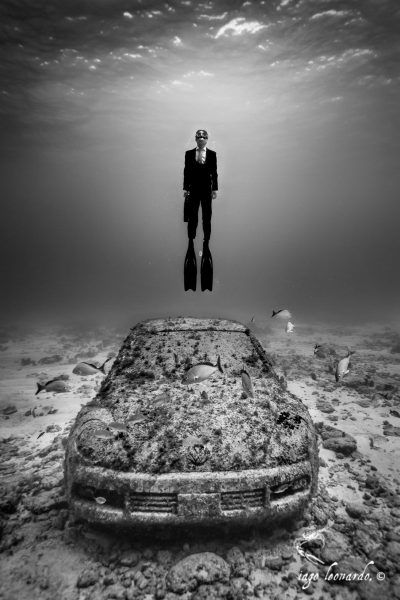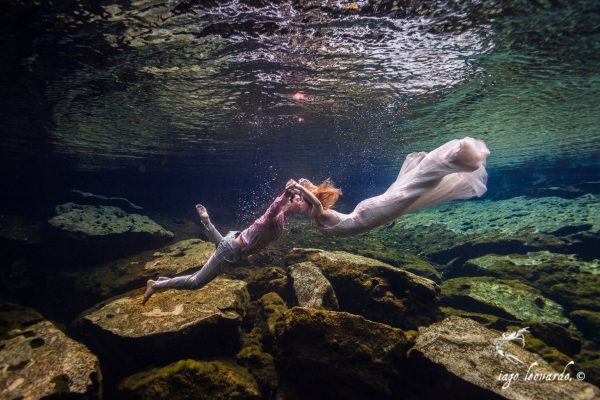When the Natural History Museum announced the finalists for its 2016 Wildlife Photographer of the Year competition, the collection of images were truly stunning. Each one brought to life a hidden aspect of wild creatures you are unlikely to see anywhere else.
One image that especially stood out in our minds was a photo by Iago Leonardo of a fish that’s virtually invisible. The intrepid photographer captured images of the selene bomer fish on the Isla Contoy in Mexico while free diving.
We contacted the fine art photographer and asked him about how he got the shot.
LO: How long have you been a photographer?
Leonardo: I became interested in photography at the age of 22, 18 years ago. I’ve been doing it professionally for 15 years.
LO: Do you do a lot of underwater photos?
Leonardo: Yes, currently I mostly do underwater photography with an emphasis in fine art, combining nature, wildlife and models. You can see some of my work at iagoleonardo.com. Now I’m doing private sessions trash the dress in cenotes and at sea.

LO: At the time you took this shot, were you targeting this type of fish or did they just appear?
Leonardo: I dove with them before. I interacted with them several days. I took a lot of photos of them and this was the culmination of it.
LO: At first I thought the image was a reflection of the fish on the bottom of the frame. I was wondering what it looked like in person. Did the fish look invisible? If so was it hard to know what you were shooting at?
Leonardo: You learn to identify them with time. After you see them for the first time, then you’ll never miss them. It also depends on the angle you see them from and how light is hitting them. For instance, I have other photos in which you can see them way more clearly because the light comes from a different angle. The closer to the surface the less visible they are. The deeper, the more visible. They use light refraction to camouflage themselves.
LO: Have you ever won a contest like this? How do you feel about it?
Leonardo: I didn’t win this one. I’m a finalist. I’m excited and it’s an honor to be part of the exhibit at the Natural History Museum and be involved with an institution that admire so much.

For more of the artists work visit IagoLeonardo.com








